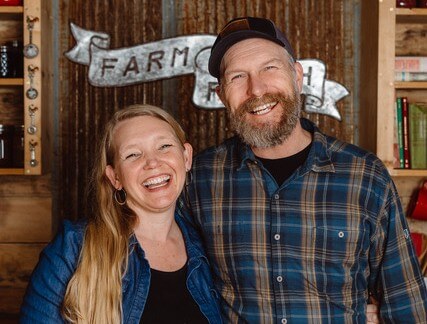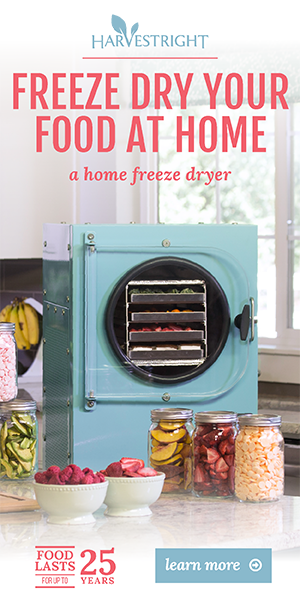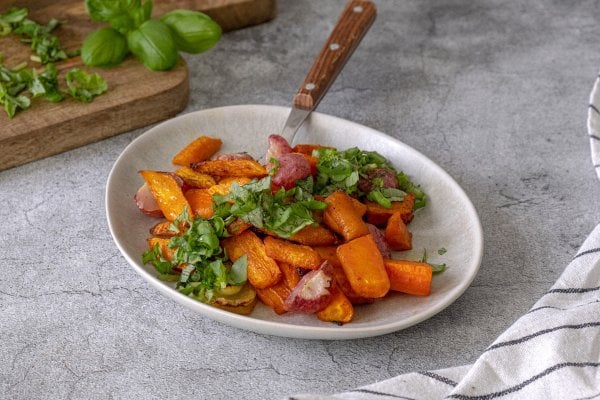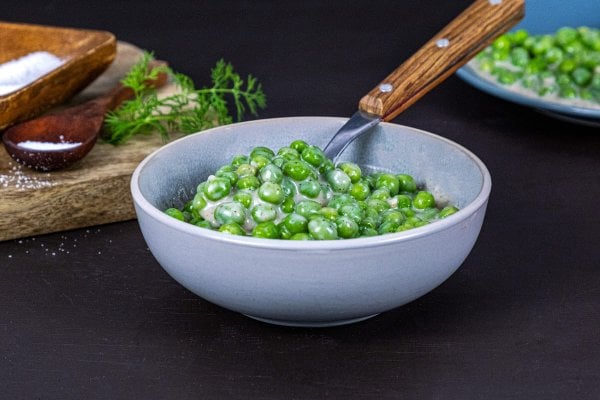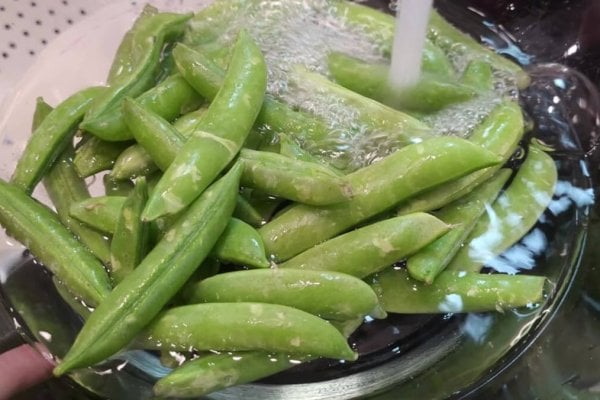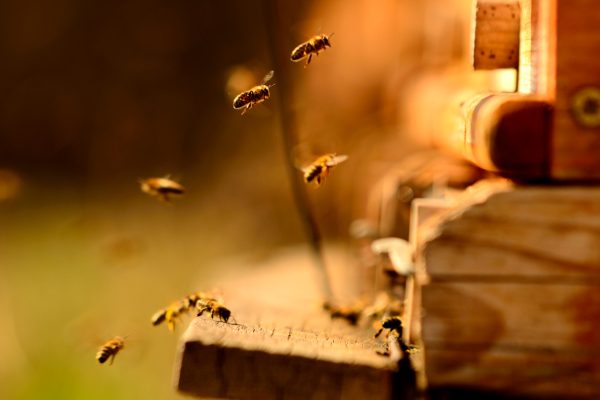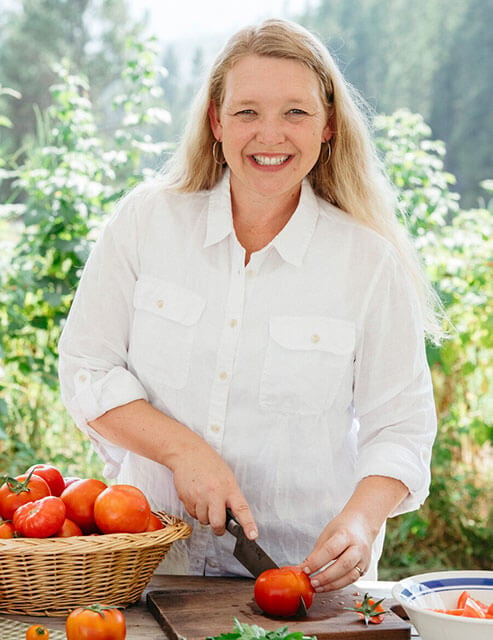In a world where we’re constantly searching for unique flavors and creative ways to preserve our favorite seasonal produce, pickled snap peas have emerged as a surprising star.

Did you know that this humble legume can be transformed into a crunchy and tangy snack that will leave you craving more? Whether you’re a pickling newbie or a seasoned pro, this will become your go-to recipe for making the most delicious crunchy pickled snap peas.
Table of Contents
ToggleWhy I Love Pickled Snap Peas
The great thing about fermenting veggies for snacks is the variety of flavors that work perfectly! Whatever herbs are currently thriving in your garden, throw them into the brine. Mix, match, and experiment to find your favorites.
These fermented snap peas can be dilly, just like traditional pickles, but they’ll also be amazing with oregano, basil, rosemary, thyme, cilantro, or even red pepper flakes for heat. Use what you love!
The peas are perfect on summer salads, sandwiches, stir-fries, chopped in chicken salad, or on a charcuterie board. For more of our favorite pickled goodies, be sure to check out our favorites:
- Quick & Easy Refrigerator Pickles (Garlic Dill Pickles)
- Quick & Easy Zucchini Pickles
- How to Make Pickles (Pickled Cucumber Recipe & Best Canning Method)
- Easy Pickled Garlic (Fermented Garlic Recipe)
- The Best Pickled Egg Recipe

The Best Way to Preserve Snap Peas
Preserving snap peas is a great way to enjoy their crunch and flavor all year round. When it comes to preserving snap peas, the best way is to pickle them. Pickling not only locks in the freshness of the peas but also adds a zesty and tangy taste that complements their natural sweetness.
If you want to preserve snap peas and maintain their crispness, don’t miss these tips to take your pickled snap pea recipe to the next level:
- Choose the Best Snap Peas – When picking snap peas for pickling, make sure they are fresh, crisp, and vibrant in color. This will ensure that your pickled snap peas have the perfect texture and taste.
- Add Some Extra Crunch – For an added crunch, add some sliced radishes and/or carrots into your pickling jars.
- Experiment with Seasonings – Don’t be afraid to get creative with your pickling brine. Try adding different herbs and spices like dill, garlic, or chili flakes to give your pickled snap peas a unique twist.

Sugar Peas vs. Snap Peas
When it comes to peas, there are many different varieties to choose from. Two popular options are sugar peas and snap peas. While they may seem similar at first glance, there are some key differences to note.
Sugar Peas
Sugar peas, also known as snow peas, are known for their unique flat shape. These peas have thin walls and are harvested when the peas inside are still very small. The entire pod is edible and has a delicate, sweet flavor. Sugar peas are often used in homemade stir-fry, salads, and as a crunchy snack.
Snap Peas
Snap peas, on the other hand, have a rounder shape and a slightly thicker pod. The pods of snap peas are crunchy and more fibrous compared to sugar peas. They are harvested when the peas inside have reached a larger size but are still tender. Like sugar peas, snap peas are also versatile and can be enjoyed in various dishes or as a snack.
Now that you’re familiar with the differences, you can choose the variety that best suits your pickling needs. Sugar peas may offer a sweeter and more delicate texture, while snap peas provide a satisfying crunch. Feel free to experiment with both varieties to find your favorite.

The Homestead Kitchen
This recipe for pickled snap peas was featured in issue No.21 of the Homestead Kitchen magazine. If you desire a life of self-reliance but find yourself scrolling through social media, watching the lives of others who are fulfilling YOUR dream, then this magazine was designed just for you.
Our goal as established homesteaders is to share all we have learned, both the good and bad, to support you and help you build the confidence you need to chase your homesteading dreams.
Enter the Homestead Kitchen magazine. This beautiful, well-designed magazine, curated with homesteading information like recipes, DIY instructions, tips and tricks, and easy-to-follow guides, will save you time and headaches on your homesteading journey.
The response has been so great that this magazine is now available in print! So subscribe today to have your monthly copy delivered right to your mailbox.

Supplies Needed
Gather all the necessary supplies before getting started to make sure you have a smooth and enjoyable pickling process.
- Saucepan – A 2-quart saucepan is a good size for this recipe.
- 4 Wide-Mouth Pint Jars – We love the new canning jars from Azure Standard. They come in quart, pint, and half-gallon sizes to suit all our preserving recipes. Homesteading Hack: If you’re a first-time Azure Standard customer, use coupon code “HOMESTEADINGFAMILY15” at checkout for 15% off your order of $100 or more!
- 4 Fermentation Weights – These fermentation weights work great, but you can also use jelly jars, ramekins, or a condiment dish. Just make sure that the weight fits inside the mouth of your jar and that it is heavy enough to keep the veggies submerged below the surface of the brine.
- Lids – Once your ferment is complete, you will need an airtight seal for storage, such as these canning lids.

Ingredients Needed
Make sure to use fresh, high-quality ingredients for the best results. The crispness and flavor of your pickled snap peas will greatly depend on the quality of the peas you choose.
- 2 Tbsp Sea Salt – Use a high-quality salt such as Redmond Real Salt. Homesteading Hack: Using that link with promo code “HFSalt” will get you 15% off your order!
- 4 Cups Filtered Water – Impurities and chlorine in tap water can inhibit the good bacteria from developing in your ferment. Filtered water is always best.
- 6 Cups Sugar Snap Peas (about 1 ½ lbs) – The fresher the peas, the better!
- 4 Cloves Garlic, Peeled – Learn how easy it is to grow garlic here!
- Herbs – Experiment with different spices and seasonings to customize your pickled snap peas according to your taste preferences. Some popular options include dill, cumin, ginger, mustard seed, and black peppercorns.
- 2 Tsp Red Pepper Flakes – Optional, but adds great heat.



How to Make Crunchy Pickled Snap Peas
- Make the brine by warming water on the stove and adding salt. Stir until salt is dissolved, then set aside to cool to room temperature.
- Place one clove of garlic and one sprig of your chosen herbs in each jar. Add ½ tsp red pepper flakes to each jar (if using.)
- Fill each jar up to the shoulders with peas – about 1 ¼ cups of peas in each. Homesteading Hack: This is easiest to do by holding the jar sideways and layering peas on their sides, then filling in any gaps once the peas are snug on all sides. Leave at least 1 ½ inches of headspace.
- Pour brine over veggies until peas are entirely covered.
- Use fermentation weights (or another method) to submerge and cover your peas. No peas should be above the line of the brine.
- Loosely cover your jar with a lid.
- Store at room temperature, out of sunlight, for 1-2 weeks. Longer fermentation will result in more acidic peas, shorter will give you less acid. The brine will likely become cloudy; that is totally normal in fermentation. Homesteading Hack: You may want to put your jars on a plate or in a shallow pan to catch any brine overflow.
- Begin tasting the peas after one week. Once they are to your liking, seal the jar and place it in the refrigerator or other cold storage where you keep your ferments. Peas will be ready to eat after two days in cold storage.
Now that you know how to make crunchy pickled snap peas, you can fully enjoy their refreshing taste and tangy flavors. Get creative with your seasonings and enjoy these delicious pickled peas all year round!
Did you make these pickled snap peas? If so, please leave a star rating in the recipe card below. Then, snap a photo and tag us on social media @homesteadingfamily so we can see!

FAQ
Some recipes use white vinegar to pickle snap peas, but this recipe uses natural fermentation to create a more nutritious and delicious pickled snap pea.
These pickled snap peas generally need to sit for at least 1-2 weeks for the fermentation process to complete.
You can make your pickled snap peas as spicy as you like by adding red pepper flakes or other hot spices and peppers to the pickling brine. Adjust the amount according to your heat preference.
Yes, you can use dried dill instead of fresh dill in your pickled snap pea recipe. However, keep in mind that the flavor of dried dill may be slightly different, so adjust the amount to taste.
Yes, you can definitely add cherry tomatoes to your pickled snap pea recipe. They will add a burst of color and flavor to your jars.
You can pickle a variety of vegetables along with snap peas, such as carrots, radishes, cucumbers, and cauliflower. This will create a diverse and visually appealing pickled vegetable medley.
Absolutely! Pickled snap peas add a crunchy and tangy element to salads, bringing a unique flavor profile to your greens and other vegetables.
If properly stored in a cool and dark place, pickled snap peas can last up to one year. However, they are best consumed within the first few months for optimal flavor and crunchiness.
While sugar snap peas aren’t typically recommended for canning due to their delicate texture, there are alternative methods, such as this pickled snap pea recipe, to make sure you can still enjoy their fresh taste all year long.
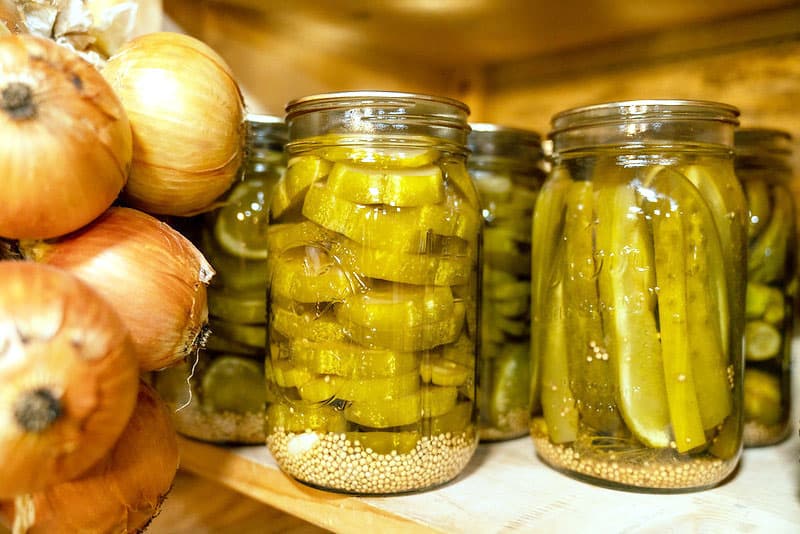
Other Posts You May Enjoy
- Quick & Easy Refrigerator Pickles (Garlic Dill Pickles)
- Quick & Easy Zucchini Pickles
- How to Make Pickles (Pickled Cucumber Recipe & Best Canning Method)
- Easy Pickled Garlic (Fermented Garlic Recipe)
- The Best Pickled Egg Recipe
- Best Way to Use Up Garden Produce – Garden Stir Fry

Crunchy Pickled Snap Peas
Equipment
- Saucepan
- 4 Wide-Mouth Pint Jars & Lids
- 4 Fermentation Weights
Ingredients
- 2 Tablespoons sea salt
- 4 cups filtered water
- 6 cups sugar snap peas about 1 1/2 pounds
- 4 cloves garlic
- herbs optional
- 2 teaspoons red pepper flakes optional
Instructions
- Make the brine by warming water on the stove and adding salt. Stir until salt is dissolved, then set aside to cool to room temperature.
- Place one clove of garlic and one sprig of your chosen herbs in each jar. Add ½ tsp red pepper flakes to each jar (if using).
- Fill each jar up to the shoulders with peas – about 1 ¼ cups of peas in each. Homesteading Hack: This is easiest to do by holding the jar sideways and layering peas on their sides, then filling in any gaps once the peas are snug on all sides. Leave at least 1 ½ inches of headspace.
- Pour brine over veggies until peas are entirely covered.
- Use fermentation weights (or another method) to submerge and cover your peas. No peas should be above the line of the brine.
- Loosely cover your jar with a lid.
- Store at room temperature, out of sunlight, for 1-2 weeks. Longer fermentation will result in more acidic peas, shorter will give you less acid. The brine will likely become cloudy; that is totally normal in fermentation. Homesteading Hack: You may want to put your jars on a plate or in a shallow pan to catch any brine overflow.
- Begin tasting the peas after one week. Once they are to your liking, seal the jar and place it in the refrigerator or other cold storage where you keep your ferments. Peas will be ready to eat after two days in cold storage.

